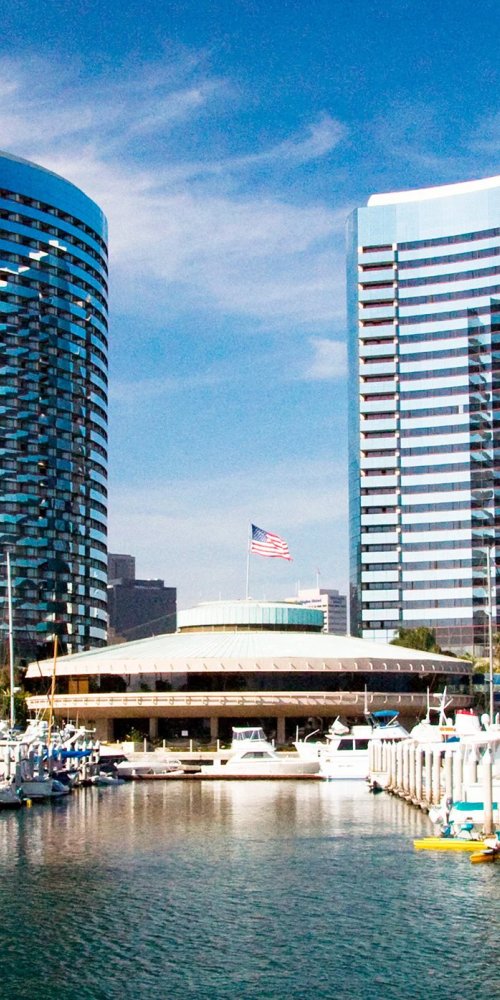

The rhythmic beep of ticket barriers echoes through buzzing stations, while the metallic chime of tram bells cuts crisply through the air. Around you, conversations swirl in a mosaic of languages - Spanish, Tagalog, English, and many more - melding into a lively soundtrack of the city. The hum of electric buses paddling by on sunny avenues, the subtle rumble of metro trains descending underground, and the distant calls of seagulls bring San Diego’s pulse vividly to life. When I first climbed the cathedral tower and looked down, the neat weave of tram tracks and bus routes reminded me just how accessible this city truly is. In San Diego, CA, US, public transport isn’t just about getting from A to B - it’s about feeling part of the city’s vibrant rhythm.

Choosing public transport in San Diego, CA, US offers far more than just a cost-effective alternative to taxis or car rentals. With fuel prices rising and the city’s steadily growing traffic congestion, hopping on the metro, tram, or bus saves you time and stress. For example, I once timed a trip across downtown during rush hour: the trolley glided past a gridlocked freeway, whisking me to my destination in less than half the time a car would take.
Environmentally, committing to public transport helps reduce your carbon footprint. Each electric trolley and hybrid bus is a small victory for cleaner air in this sunny Californian city, renowned for its commitment to sustainability. Beyond price and speed, you tap into a sustainable network that encourages local economic vitality, reduces parking nightmares, and connects you effortlessly to cultural, culinary, and coastal hotspots.
Accessibility is another plus - whether you’re travelling solo, with family, or carrying luggage. Plus, public transport integrates tightly with bike-share schemes, ferry routes, and walkable transit hubs, offering persistent convenience beyond a single mode. So whether it’s your first visit or a regular commute, understanding how to get around San Diego, CA, US, by public transport is a savvy move for budget, comfort, and experience alike.
| Mode | Lines | Peak Frequency | Night Service |
|---|---|---|---|
| Metro Trolley | 3 (Blue, Orange, Green) | Every 7-15 mins | Limited weekend nights |
| Bus | 90+ routes | Every 10-30 mins | Selected main lines |
| Ferry | 1 major route | Hourly | No |
| Bike Share | 3000+ bikes | As available | 24/7 |
San Diego’s public transport network is a well-oiled hybrid combining the efficiency of light rail with an extensive bus grid and the charm of ferry cruises. The Blue Line connects downtown to the Mexican border, while the Orange Line links vibrant business districts and residential suburbs. Night services aren’t widespread but cover key corridors, so plan accordingly. Integrate biking to plug transit gaps or explore scenic coastal spots not directly served by trains or buses.
Peak hours in San Diego generally stretch from 7 to 9:30 AM and 4 to 6:30 PM on weekdays. Trams and buses swell with commuters heading downtown or to major employment hubs. During these times, services run with higher frequency, but be prepared for packed vehicles. It’s wise to buy tickets in advance or use contactless payment to avoid delays.
Off-peak hours are noticeably quieter. Mid-day, late evenings, and weekends offer more spacious travel and sometimes lower demand at ticket booths, making your journey more relaxed. However, service frequency dips, especially on bus routes, so check schedules carefully.
Some night services operate on select routes during late weekend hours, catering to nightlife and late-shift workers. These night options tend to have limited stops, so plan the final leg of your journey in advance.
Plan combining bike-share and public transport off-peak if you want to avoid wait times and maximise city exploration. When I opted for a morning trolley ride followed by an afternoon bike tour through Balboa Park, the ease was unmatched.

San Diego’s metro trolley and many buses are fully wheelchair accessible, featuring ramps and dedicated spaces. Station platforms generally offer level boarding, but check specific route info if planning transfers.
Parents find ample space for prams on most vehicles. Boarding ramps and folding seats support smooth travel. During peak times, consider travelling off-peak for more comfort.
If you’re carrying luggage, especially from San Diego International Airport, the trolley Blue Line is your best bet - it’s directly connected and allows stored bags. Buses may be cramped during peak, so choose times accordingly.
A: Most bus routes require you to buy tickets in advance via machines or apps. Some exceptions exist on certain lines, but it's safer to pre-purchase to avoid penalties.
A: Yes, day and multi-day unlimited passes offer great value for visitors, with easy purchase options through vending machines or apps.
A: While daytime service is frequent, night services are limited mostly to weekends; plan your return trip carefully.
A: The Blue Line metro trolley connects the airport and downtown directly and has good luggage space. Avoid busy buses with bags during peak hours.
Now that you’re armed with insider knowledge on public transport in San Diego, CA, US, why not take the leap and experience this dynamic city stress-free? Whether you’re a first-timer or a seasoned visitor, let the metro’s steady glide, the bus’s attentive routes, and the freedom of bike-share be your companions. Got questions or your own tips to share? Drop a comment below and subscribe to our newsletter for even more transit wisdom.

Additional articles from our network with useful insights about San Diego.